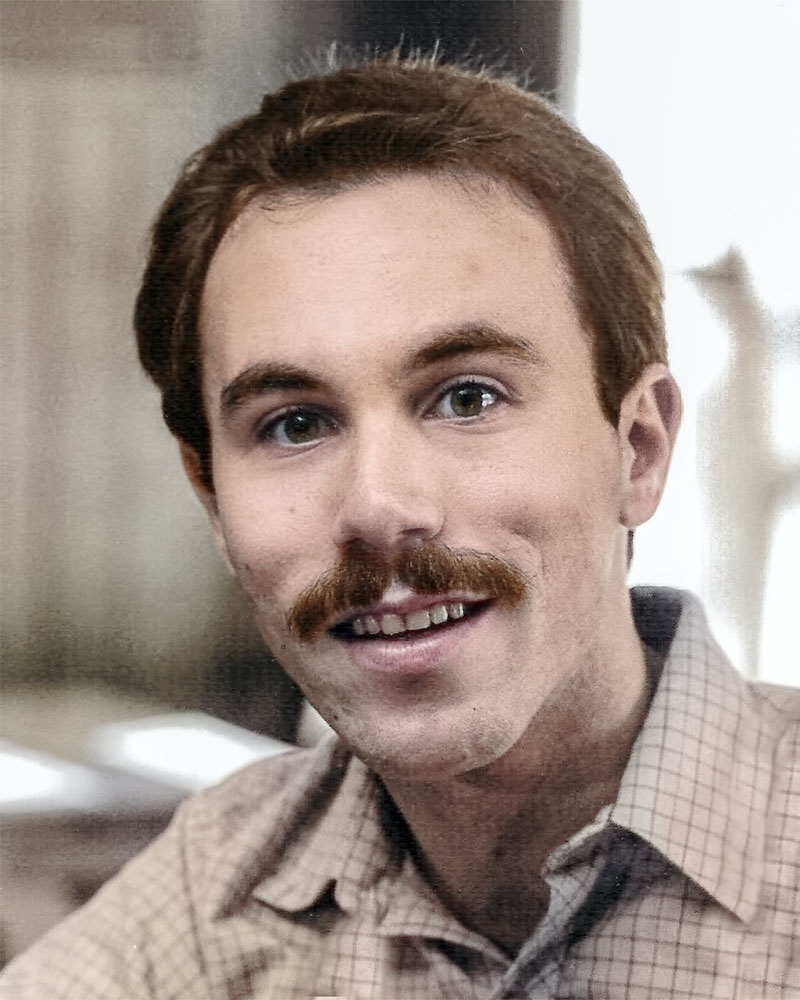Underperforming
My first paid acting job came a year or two after I graduated from college, when I got the leading role in an educational video. (This was years before I became a producer of educational videos myself.) Given the momentousness of the occasion, it’s amazing how little I remember about the experience. I have no memory of who produced the video, who my fellow actors were, or even how I got the gig.
This last question is especially puzzling, because there’s no way I ever should have been cast in the role. I played an exchange student from a Spanish-speaking country who has trouble fitting in with his peers despite being a star member of the swim team. As a native English-speaking, non-Hispanic, non-athlete who hates being in the water, I was probably the least suitable person they could have chosen. However, I was slim, young, and had brown hair and a mustache, and I was able to summon up a passable generic Spanish accent. (Fortunately, there were no actual swimming scenes in the script.) Such politically incorrect casting would never fly today, but it apparently didn’t bother anyone in the 1970s.
I (not surprisingly) didn’t feel like I played the part very well, but the director was satisfied, and I got my paycheck. A couple of weeks after shooting ended, I was surprised to get a call from the producer, inviting me to see a rough cut of the video. Watching it was a big boost to my self-esteem: My performance wasn’t nearly as bad as I’d thought it was. In fact, it was pretty damn good. Believable, even.
A rough cut, in those days, was done on an inexpensive video-editing machine that offered no color adjustments, fades, dissolves, effects, or image stabilization. It was an economical way to experiment with different ways of editing the footage and to decide what the final version would look like. The final “online” edit, based on the rough cut, would be done with broadcast-quality equipment in a professional editing suite with a high hourly price tag.
When I finally got to see the product of the online edit, I was appalled. My performance, with which I had formerly been so impressed, was embarrassingly terrible. It was immediately clear why: The editing of the final version was entirely different from the rough cut. It was simple and straightforward, with longer takes and fewer cuts. Instead of combining the best parts of several takes of a scene, the editor had just used one take and let it play out, regardless of inconsistencies in the acting and lapses in the rhythm of the scene.
The producer confessed to me that the project had gone over budget, and that he couldn’t afford to do an online edit that was as elaborate as what I’d seen in the rough cut. He nevertheless seemed satisfied with the final result. I was not. I hoped the master tape would meet with some horrible accident, and that I would be the last person ever to have viewed this video. I honestly don’t know what became of the video after that. If there was a horrible accident, I never heard about it, but I’m happy to say that no audience member ever tracked me down and pelted me with tomatoes.
What this experience left me with is a keen appreciation for what the editor contributes to a film or video. When we see a film, we tend to notice and comment on the acting, the story, the production design, and perhaps the special effects, but we’re generally not conscious of the editing. Even I, having spent time on both sides of the camera, will compliment an actor’s performance without thinking about the fact that the actor contributed only the raw material, and that the performance was largely constructed by someone else.
I was reminded of this sometime later when I saw a live performance by a local band that I was a fan of. It had been a couple of years since I’d last seen them perform, and suddenly I found myself wondering what I had liked about them. They were playing the same material as before, but it sounded — well, not very good. The music was flat and uninspired.
Midway through the performance, I found out why. The band’s frontman mentioned that they’d recently brought in a new bass player, but that their former bass player was in the audience — and would he like to come up and sit in for a few tunes? The retired bass player accepted the invitation, and suddenly the band sounded like its old self again.
This was a revelation. When listening to a band, we tend to notice the melody and harmony, the lyrics, the rhythm — but who notices the bass part? It turns out that the bass line is like the foundation of a building. It holds the building up, but we never think about it unless it cracks.
It must be frustrating to be an artist in a role that’s invisible to most people, where the only way to know that you’re doing it well is when nobody notices what you do.

Recent Comments